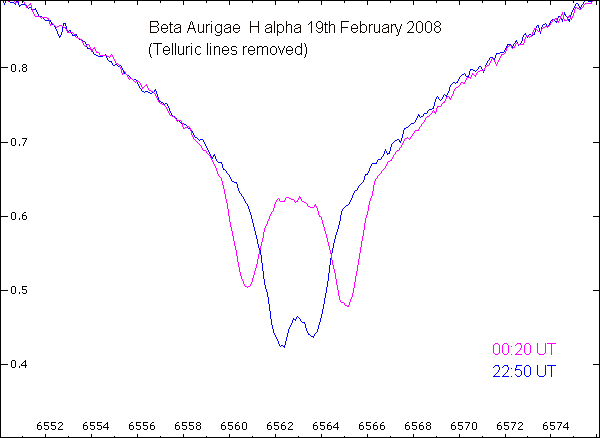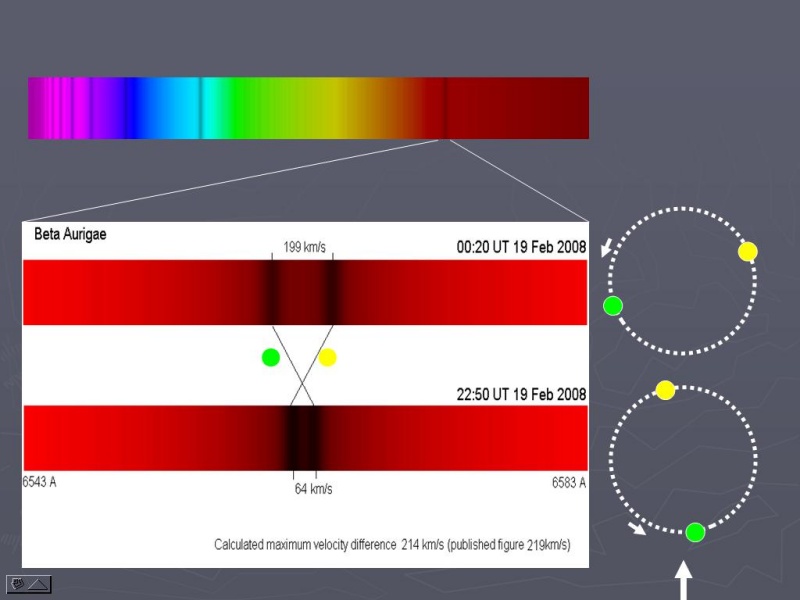HOME
SPECTROSCOPY
HIGH RESOLUTION SPECTROSCOPY WITH THE LHIRES III
Radial Velocity measurements of Spectroscopic Binary
Star Beta Aurigae
The two almost identical A class stars in the Beta
Aurigae system orbit around their common centre of gravity every 3.96 days.
With a magnitude of 1.9, the pair makes an ideal target to demonstrate the
capabilities of the LHIRES III spectrograph at maximum resolution using the
2400 lines/mm grating. With my setup this gives 0.095A/pixel dispersion at the
H alpha wavelength which equates to a radial velocity of 4.3 km/sec/pixel.

The two separate Ha absorption lines are clear at 00:20. By 22:50, 23.5 hours later they have merged and
crossed. By measuring the changes in
radial velocity, using the period of the system (From photometric measurements
for example as this is also an eclipsing binary) and assuming the orbits are
circular, the maximum difference in radial velocity can be estimated. The calculated figure of 214km/sec is close to the published
figure of 219km/sec.

This slide was prepared for a presentation to the joint BAA – AAVSO meeting
in Cambridge April 2008 and shows
the approximate positions of the two stars at the times the spectra were taken.
The strip spectra were generated from the data using Visual Spec. The data for
the low resolution spectrum is for a typical class A
star from the Pickles catalogue.
SPECTROSCOPY
HOME

